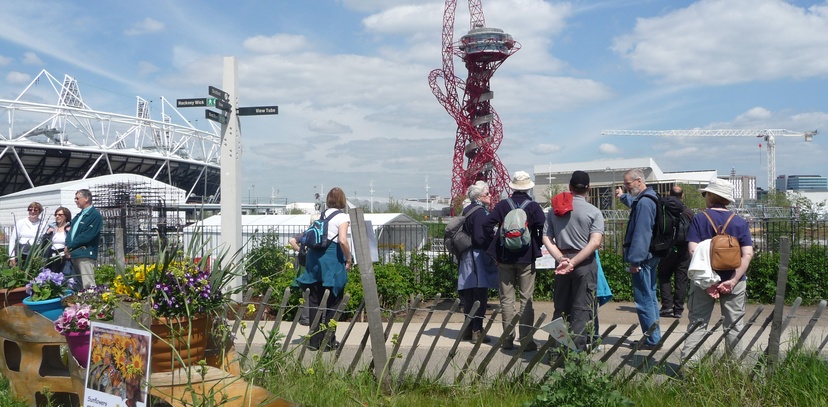
Free public access to the almost completed Olympic site in East London ended on May 17th with the closing of the View Tube. A social enterprise and community venue constructed from recycled lime green shipping containers, it has been home to a social enterprise café (and great coffee), a classroom for visiting schools, an arts programme and community garden. It has offered East Londoners an observatory on the gradual emergence of the Olympic site over the last four years.
A visit on its last open weekend before closure offered prime viewing of Anish Kapoor and Cecil Balmon's 115 metre tall ArcelorMittal Orbit, Britain's largest public artwork. People who want to see the panorama from the top will need to pay £15 per person, £7 for children, something Anish Kapoor has described as "a hell of a lot of money".
View Tube has been closed to allow the final stages of construction of the Olympic park. This Spring, it hosted an installation of Lemm Sissay's poem "Spark Catchers" inspired by both the signs on electricity transformer enclosures ("Danger of Death") and the nearby Bryant and May factory, at the south west of the Olympic park in Bow. This is a defining local landmark, the site of the 1888 match girls strike and now a gated community. It is also, this summer, the possible site of surface to air missiles, installed to protect the Olympics against terrorist threat.
The legacy of London 2012 walks the line between accessibility, opening up Stratford and wider East London communities to new opportunities and regeneration; and financial imperative. The cost of climbing the new, red, spiralling tower is steep. Hopefully the longer term benefits of the Olympics will be free. As the former Bryant and May factory shows, the way places are used changes over time. View Tube opens again in the Autumn.
Post by Nicola Bacon, Founding Director, Social Life.